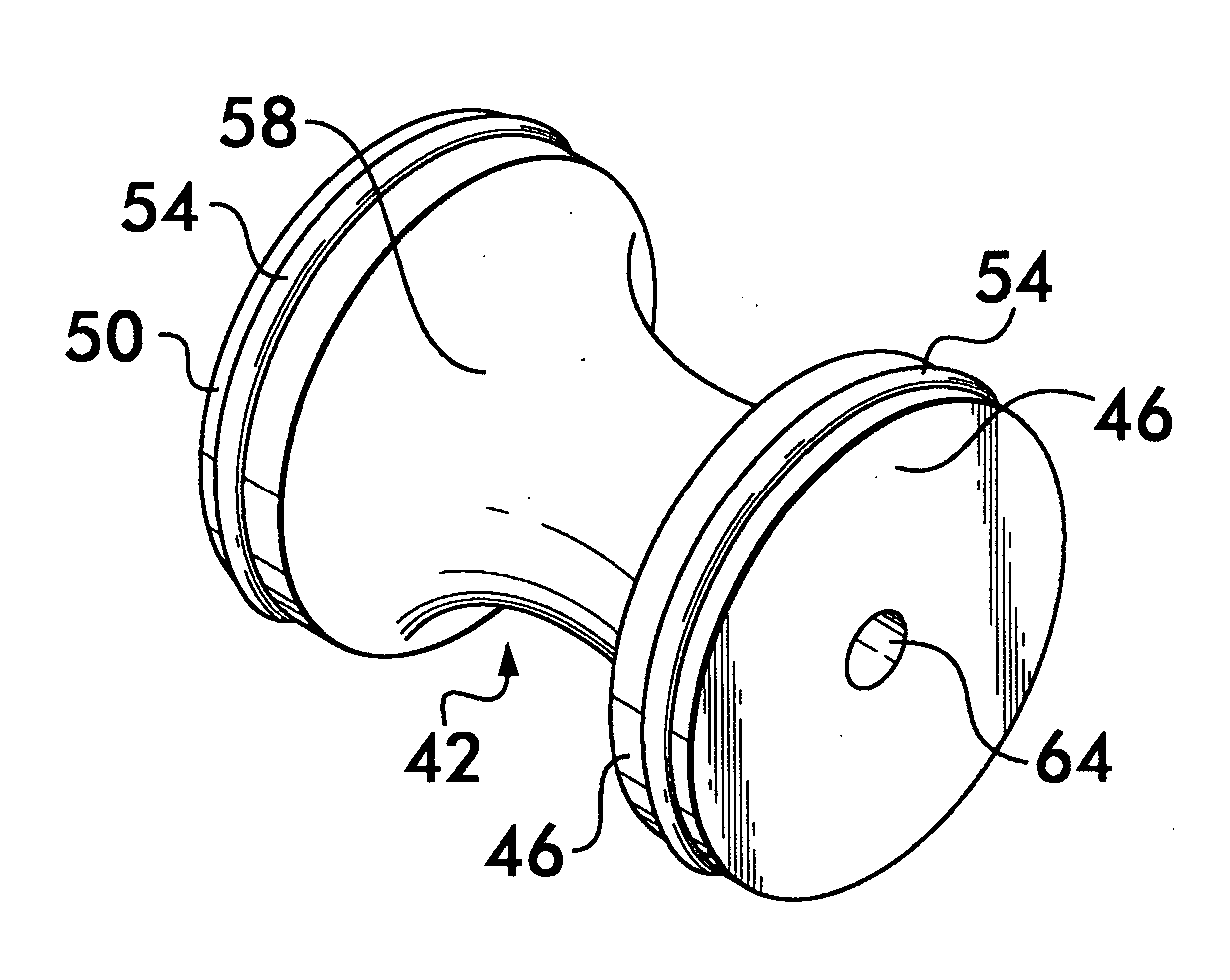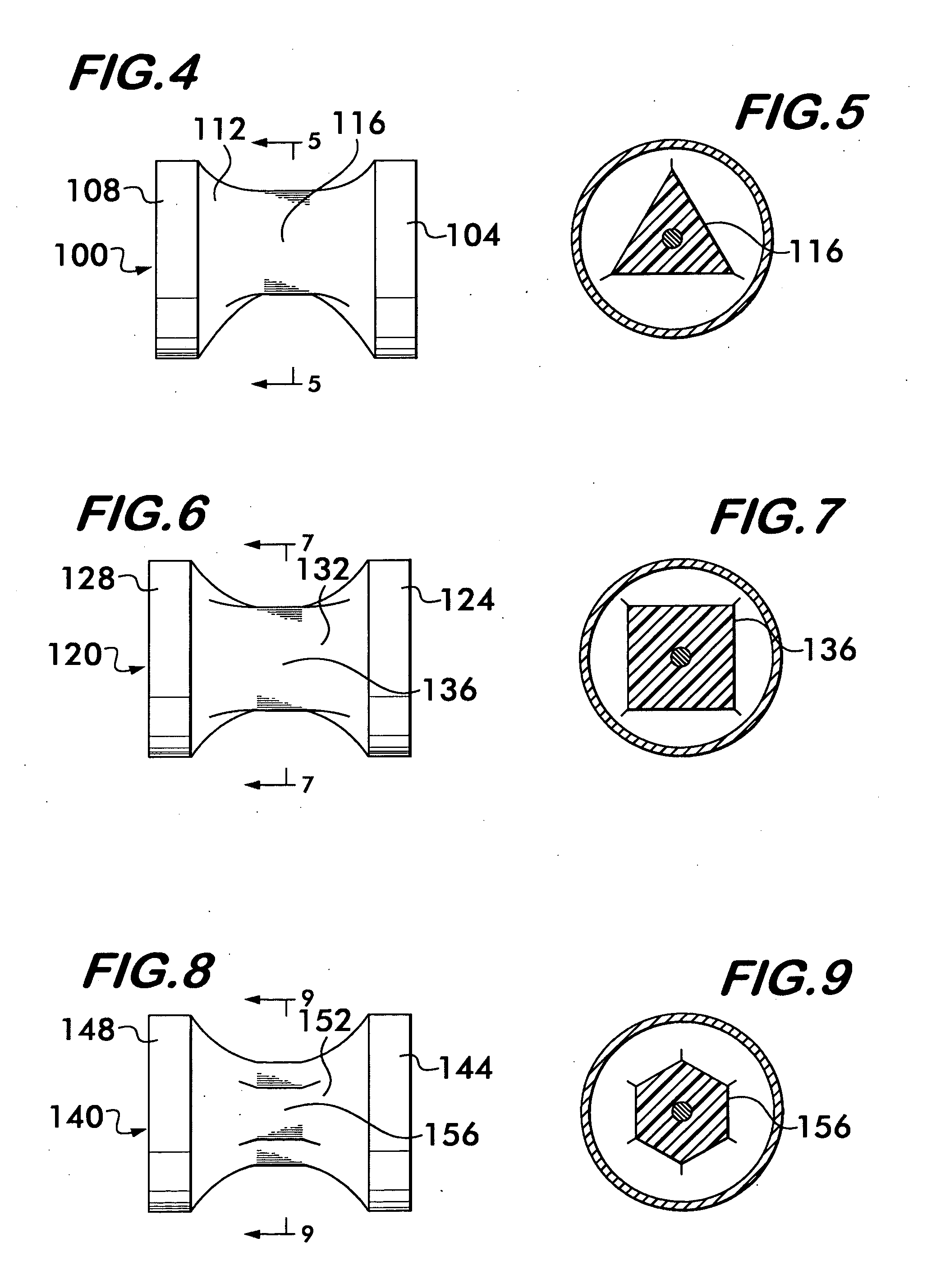Acoustically Pleasing Headjoint Stopper for a Transverse Flute
a transverse flute and head joint technology, applied in the direction of instruments, wind instruments, musical instruments, etc., can solve the problems of cork having its disadvantages, adversely affecting the sound quality of the instrument, cork also having the disadvantage of deterioration, etc., to improve the sonic quality of the instrument
- Summary
- Abstract
- Description
- Claims
- Application Information
AI Technical Summary
Benefits of technology
Problems solved by technology
Method used
Image
Examples
Embodiment Construction
[0015]Referring now in detail to the various figures of the drawings wherein like reference characters refer to like parts, there is shown in FIG. 2, a conventional headjoint 10 for a transverse flute. Although the term “flute” is used herein, it is to be understood that this term refers generally to musical instruments of the flute family. Such instruments include concert flutes and piccolos, but may also include other instruments such as the fife or penny whistle. The headjoint 10 is that portion which attaches to the body portion of the flute. The headjoint 10 may be formed of any suitable material, e.g., wood, metal, silver, gold, bamboo, etc., and includes a cylindrical wall 14 having an inside surface 16. The cylindrical wall 14 is adapted to interconnect at its forward end 18 to the body of a musical instrument, e.g., a flute body (indicated in the direction of the arrow 22, but not shown).
[0016]At the rearmost end 26 of the cylindrical wall 14, a button or crown 12 engages t...
PUM
 Login to View More
Login to View More Abstract
Description
Claims
Application Information
 Login to View More
Login to View More - R&D
- Intellectual Property
- Life Sciences
- Materials
- Tech Scout
- Unparalleled Data Quality
- Higher Quality Content
- 60% Fewer Hallucinations
Browse by: Latest US Patents, China's latest patents, Technical Efficacy Thesaurus, Application Domain, Technology Topic, Popular Technical Reports.
© 2025 PatSnap. All rights reserved.Legal|Privacy policy|Modern Slavery Act Transparency Statement|Sitemap|About US| Contact US: help@patsnap.com



